 |
|
|
|
||
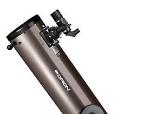 |
||||||||||||||||||
Telescope Advice |
||||||||||||||||||
Stellarvue |
||||||||||||||||||
Telescope Recommendations 1. Overall, I think the best telescope for the money is the $550 Orion Telescopes 8-inch diameter Newtonian reflector with a digital hand display for finding objects. This is a manual scope that you move by hand, but the hand display tells you what direction to push the telescope so any object chosen from its database will appear in the eyepiece. You can purchase direct, but some telescope stores carry this model. If you purchase this scope or any other quality scope, it will be fairly easy to sell if you don’t like the hobby. 2. Refractors. I would look at Stellarvue for a good quality refractor. Tele Vue telescopes have THE highest quality optics but they are expensive (I own three Tel Vue scopes and love them—Ken Graun). Refractors often don’t come with a mount and tripod, so take a look at iOptron. 3. Hybrid Telescopes. The Schmidt-Cassegrain Telescope (SCT) is probably the most versatile and feature ladened telescope on the market. I prefer the Celestron brand over Meade. The 8-inch is the most popular size. These scopes are GOTO (Go-To), that is, they have computerized motors that will automatically move to and track any object selected from the hand controller (which has a display and lists thousands of objects, including all the planets).
Telescope Reviews. Click here for a link to telescope reviews. Want Telescope Advice? If you have a question or would like advice on buying a telescope or accessory, please email me (Ken Graun) at AstroInfo. No charge, no obligation, no hassles. |
 |
|||||||||||||||||
Orion |
||||||||||||||||||
 |
||||||||||||||||||
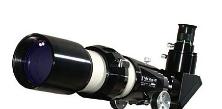 |
||||||||||||||||||
Tele Vue |
||||||||||||||||||
Celestron |
||||||||||||||||||
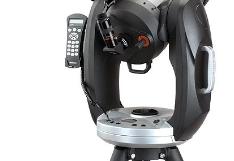 |
||||||||||||||||||
The Three Basic Telescopes |
||
Refractor When most people think of a planet, they think of Saturn. When they think of a telescope, they think of a refractor. A refractor is a telescope with a front lens that brings light to a focus at the rear of the instrument. Refractors were the first telescopes. It all started around 1608 when Galileo and other scientists heard about the invention and made their own instruments for astronomical use. Refractors were used extensively by astronomers until the early 1900s, when they were replaced by reflectors that were larger and less costly to build. The largest refractor in the world, completed in 1897, is the 40-inch diameter Yerkes refractor at Williams Bay, Wisconsin. Among amateurs, refractors have enjoyed a resurgence because their optical quality has im-proved dramatically over the past years. The refractor attraction The down side Cost, APOs and size limitations Although $3,000 dollars is a lot of money for a quality 4-inch refractor, a middle-of-the-line, good-quality, 3-inch refractor can be purchased for $400 to $1,000. The $3,000 refractor represents the highest quality type and is known as an APO (pronounced A-P-O, an abbreviation for apochromatic, which means “free of any optical aberrations”). These telescopes provide incredibly sharp images and for this reason, I enjoy looking through an APO telescope more than any other type of telescope. The largest readily available diameter for refractors is 4 inches (100mm). Diameters of just 5 to 6 inches must often be special ordered, sometimes with waiting periods of several years.
Newtonian Reflector and the Dobsonian The Newtonian reflector has been a workhorse for both professionals and amateurs since its invention in 1668 by Isaac Newton. This type of telescope has a concave parabolic mirror at the rear of its tube that focuses light to an eyepiece near the front end. Amateurs enjoy using reflectors more than ever, in diameters ranging from 4 to more than 36 inches. Least expensive per inch Newtonian Reflector = Dobsonian A little more maintenance “Light buckets” Manual labor A little help from a friend
Schmidt-Cassegrain Telescopes (SCT) & Other Hybrids The Schmidt-Cassegrain Telescope (often called S-C-T) is the telescope of choice amongst amateurs, but what is it? Schmidt-Cassegrain is the name of an optical design inspired by Barnard Schmidt (1879–1935) and Guillaume Cassegrain (1625–1712). This type of telescope is often referred to as a hybrid because it contains elements of both reflecting and refracting telescopes. Like a Newtonian reflector, it has a rear primary mirror that focuses light, but it also incorporates a front lens or corrector plate that not only seals the tube from the environment but also helps to fold the optics, making this telescope very compact. The eyepiece holder is at the end of the tube, similarly to a refractor, but for the focused light to get there, it must pass through a hole in the middle of the mirror. This design has been so successful that a 5.5-inch diameter version made by Celestron has been used on Space Shuttle missions. Computer automated GO TO technology Other hybrids Best value, cost Maintenance |
||||||
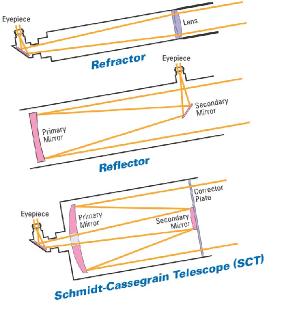 |
||||||
The three most common telescopes use different means to bring light to a focus. |
||||||
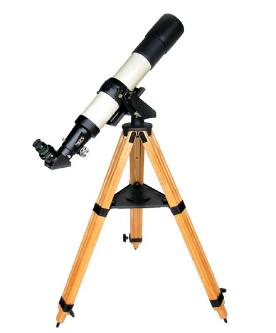 |
||||||
A 4-inch APO refractor by Tele Vue. Although this telescope is expensive, its optical quality is outstanding. It is mounted on a simple, non-motorized altitude-azimuth mount that allows up and down movement as well as rotation around the center axis. As pictured, this telescope lacks a finderscope for aiming at the sky. |
||||||
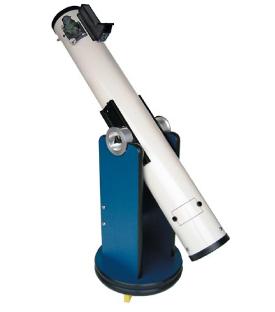 |
||||||
A homemade 6-inch Dobsonian-type Newtonian reflector. The panel near the bottom end of the tube can be removed to clean the mirror. |
||||||
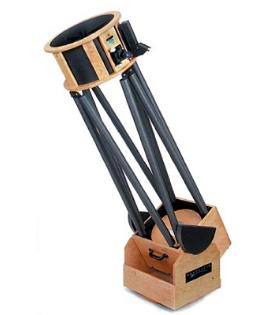 |
||||||
A 15-inch-diameter Dobsonian-type Newtonian reflector. |
||||||
Below. A Celestron 11-inch diameter Schmidt-Cassegrain Telescope. Like most SCTs, this telescope comes complete with an integral mount and stand. |
||||||
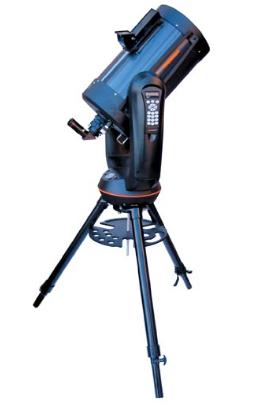 |
||||||
What’s Out Tonight? is sponsored by Ken Press, publisher of astronomy books and charts. |
||